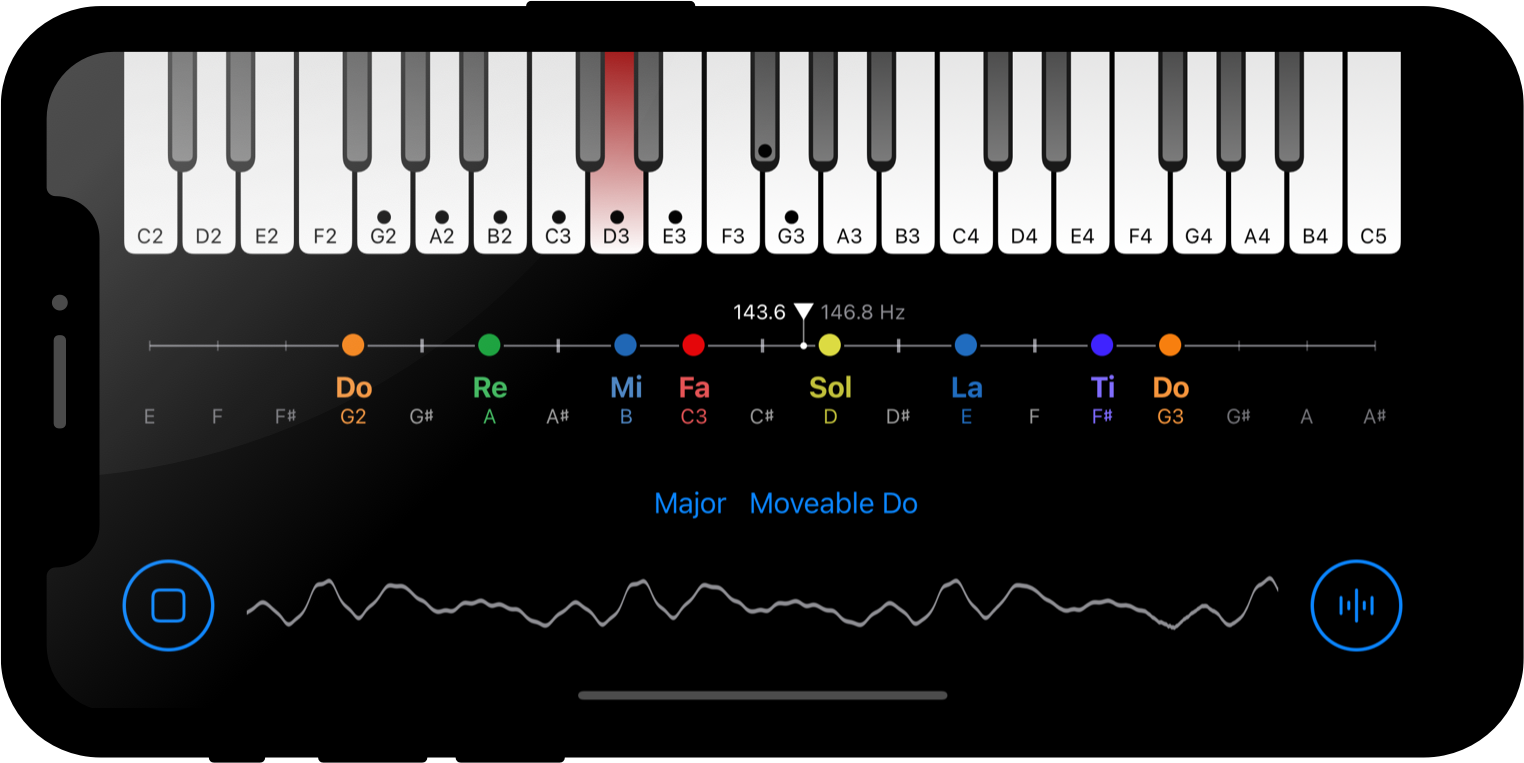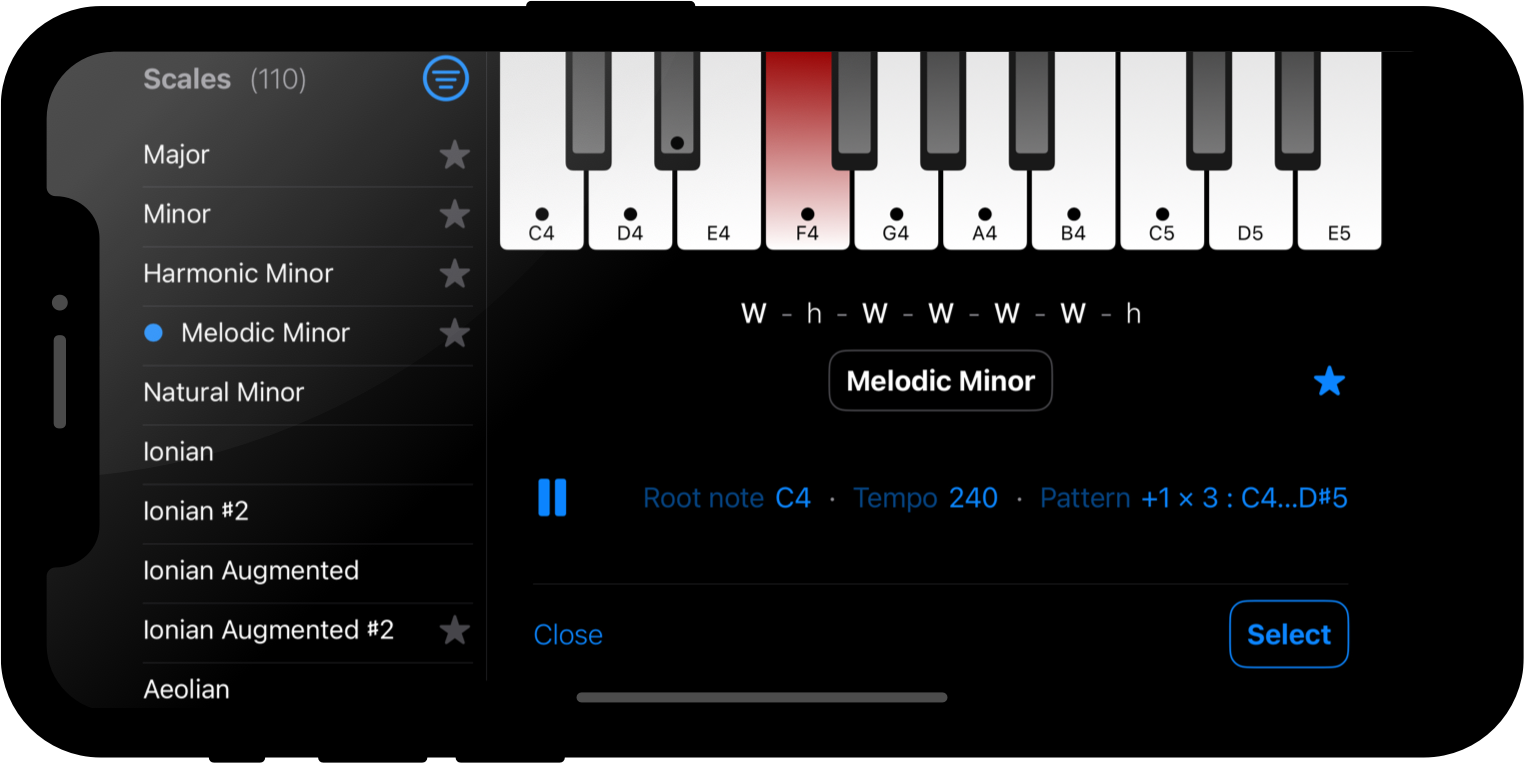
Sing Scales
Practice the most fundamental yet creatively challenging art of singing musical scales. It’s the voice training that uniquely tunes the larynx and its vocal cords towards producing and sustaining consistent sound frequencies.
Built for non-musicians*
The Sing Scales app is purposefully built with non-musicians in mind. The user interface is designed to present musical scales in an interactive manner. The user gradually acquires understanding through experimentation. The app doesn’t expect the user to have pre-existing knowledge of music theory. Singing scales is just one piano key tap away — make the lowest naturally comfortable “Do” sound, tap on the highlighted piano key and start singing the scale right away. It doesn’t have to be more complicated that that.
* Musicians are welcome too, scales are for everyone!
Library of musical scales
The app comes with an interactive scale library featuring:
- 100+ common scales
- Scale key selection
- Tempo setting for scale playback
- Configurable scale stepping pattern

The scale stepping allows repeating selected scale while stepping in a semitone (or any arbitrary tonal step) along the keyboard range.
Domain of application
Singing musical scales is a foundational skill required to build one’s vocal and hearing faculties. The skill is immensely beneficial for a number of activities:
- voice training
- mastering the art of musical improvisation
- ear training
- self-development work on building confident and flexible voice
- therapeutical applications that use voice work as the medium
Ear training is a natural outcome of singing scales. Once one acquires the feeling of producing a certain pitch, a link to the hearing faculty is being established.
Why sing musical scales?
What’s so unique about signing musical scales? Why not just learn to sing songs?
It’s much easier to produce relative pitches than to be exact with one’s voice modulation. Learning to sing songs or whistling melodies is an exercise in relative perception. One can produce interesting results but foundational skill building would be missed.
The true command of one’s voice and its connectedness to musical hearing begins from the ability to answer questions like:
- “What note am I voicing right now?”
- “How can I make a correct Fa pitch?”
- “What is the interval between the two notes I am hearing?”
It’s a challenge worth pursuing!
Technique overview
The Sing Scales app is a flexible voice measurement tool. The user can practice singing solfège syllables of Do-Re-Mi-Fa-Sol-La-Ti or any sequence of syllables of choice. For example, singing a scale in La-La-La requires a superb tuning of one’s vocal cords.
Included musical scales
The app comes with a significant library of more than 100 known scales. Each scale can be played back in any key. A piano keyboard is also provided for interactive scale exploration.
The full list of provided scale classes is as follows: Major, Minor, Harmonic Minor, Melodic Minor, Natural Minor, Ionian, Aeolian, Dorian, Mixolydian, Phrygian, Ultraphrygian, Lydian, Locrian, Super Locrian, Chromatic, Whole, Altered, Augmented, Dominant 7th, Half Diminished, Leading Whole Tone, Diminished Whole Tone, Overtone, Nine Tone, Diatonic, Enigmatic, Double Harmonic, Auxiliary Diminished, Six Tone Symmetrical, Neopolitan, Prometheus, Pelog, Pentatonic Major, Jazz Melodic Minor, Spanish Gypsy, Eight Tone Spanish, Hungarian Major, Romanian Minor, Flamenco, Gypsy, Bebop Dominant, Chinese, Oriental, Hirajoshi, Ichikosucho, Kumoi, Yo, Iwato, Mongolian, Hindu, Byzantine, Arabian, Persian, Mohammedan, Maqam, Algerian, Balinese, Purvi Theta, Todi Theta, Tritone, Insen, Istrian, Pfluke, Ukrainian Dorian, Hawaiian, Man Gong, Ritsusen.